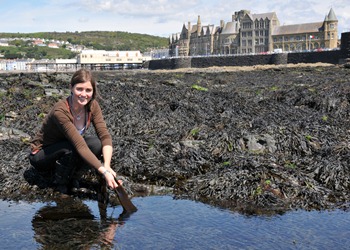Aberystwyth University Research Reveals Viable Biofuel Source Under the Sea

Dr. Jessica Adams
28 July 2011
“The storage carbohydrate and soluble sugars get converted into ethanol in the fermentation process, so we need as much as possible,” explains Dr. Jessica Adams, a lead researcher at Aberystwyth University. “Metals can inhibit the yeast too so we also want these to be as low as possible”.
Collecting monthly samples of kelp from the Welsh coast, researchers used chemical analysis to assess the seasonal variability. Their results, which were presented at the Society for Experimental Biology Annual Conference in Glasgow, showed that the best month for biofuel harvest was in July when the kelp contained the highest proportions of carbohydrate and the lowest metal content.
Kelp can be converted to biofuels in different ways including fermentation or anaerobic digestion producing ethanol and methane or pyrolysis, (a method of heating the fuel without oxygen) which produces bio-oil. The chemical composition of the seaweed is important to both of these processes.
Research into biofuels has focused on terrestrial plants; however these have the serious drawback of the conflict between using land to grow food or fuel. Marine ecosystems are an untapped resource that account for over 50% of global biomass and seaweeds themselves are capable of producing more biomass per square metre than fast growing terrestrial plants such as sugar cane.
“Seaweed biofuel could be very important in future energy production,” said Dr. Adams. “What biofuels provide that other renewables such as wind power cannot is a storable energy source that we can use when the wind drops.”
Future work will improve the viability of the process by identifying and extracting high value substances, such as pigments and phenols, before the rest of the seaweed is used to produce biofuel.



